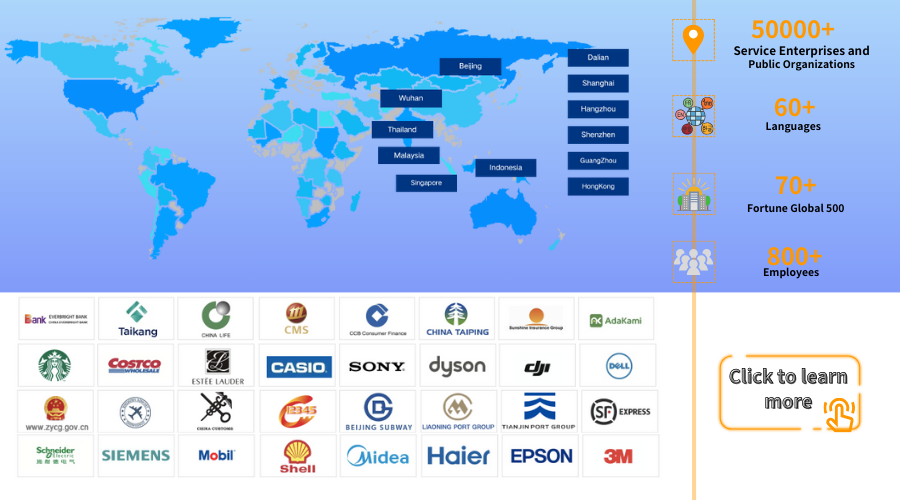How do AI Chatbots work
Article Summary:Enterprises are struggling to balance ensuring customer satisfaction while controlling costs. AI Chatbots are the best solution. This guide will introduce the working principles of chatbots and their unique importance.
Table of contents for this article
At present, consumer service channels and the expected service models are increasingly diversifying and personalized. Traditional customer service models can no longer meet customer demands. Enterprises are struggling to balance ensuring customer satisfaction while controlling costs. Moreover, the tedious nature and high turnover rate of traditional seat-based customer service work are detrimental to enterprise management. In response, chatbots have emerged. This guide will introduce the working principles of chatbots and their unique importance.
Working Principles of AI Chatbots

The working principle of AI Chatbot involves several key aspects in its technological implementation:
Language Model: The language model is a core component of AI Chatbots, determining their understanding and processing capabilities of text. It is trained on extensive corpora to perform tasks such as part-of-speech tagging, syntactic analysis, and semantic understanding of text.
Natural Language Processing (NLP) Techniques: Through NLP techniques, AI Chatbots can transform text into a form understandable and processable by machines, thereby enabling automated processing and analysis of text.
Machine Learning Algorithms: Machine learning algorithms learn and improve from vast amounts of data, enabling AI Chatbots to optimize and enhance themselves based on past experiences. This iterative learning process improves efficiency and accuracy in handling text-based interactions.
AI Chatbot is a "Thinking" Robot
It adopts an innovative three-tiered approach to guide customer service. It addresses common issues at the basic level, uses keyword recognition, matching, and answering to handle user questions at the intelligent level, and solves unanswered questions from the previous two levels at the human level, providing customers with a more efficient and intelligent service experience.
Input auto-completion guidance automatically analyzes the user's intent when they input a question and provides response prompts accordingly, allowing customers to express their questions more quickly and accurately.
Fuzzy inference and questioning guidance involve semantic analysis and matching for incomplete, ambiguous, or uncertain customer expressions. If the chatbot still cannot understand, it responds by asking the customer one or more relevant questions based on the context and key information.
By combining functional statements and expanding horizontally, the chatbot utilizes natural language processing technology and knowledge databases to understand and answer various types of questions, providing customers with more comprehensive and personalized services.
AI Chatbot is an "Autonomous Learning" Robot
It automatically gathers similar questions and phrasings by analyzing user behavior data such as common questions, search keywords, and interaction records, categorizing them based on semantic similarity and relevance. It then matches and deduces questions and phrasings based on knowledge base data to reduce response time.
Through automatic learning from matching similar phrasings, the chatbot optimizes its response model based on automatically matching similar questions, continuously learning and improving. This enables it to better understand user questions and needs, thereby enhancing service quality and efficiency.
The Importance of AI Chatbots

- 24/7 Availability: Unlike human agents, AI chatbots can operate round the clock without the need for breaks, allowing businesses to provide support and assistance to their customers at any time of day or night.
- Scalability: AI chatbots can handle multiple conversations simultaneously, making them highly scalable. This scalability is particularly valuable for businesses experiencing spikes in customer inquiries or during peak hours.
- Cost Efficiency: Implementing AI chatbots can significantly reduce operational costs by automating repetitive tasks and reducing the need for human customer service agents. This cost efficiency is especially beneficial for businesses with high volumes of customer interactions.
- Personalization: Advanced AI technologies enable chatbots to analyze user data and tailor interactions to individual preferences and needs. This personalization enhances the customer experience and fosters stronger customer relationships.
- Improved Customer Service: AI chatbots can provide quick and accurate responses to customer inquiries, leading to faster resolution times and increased customer satisfaction. Additionally, chatbots can handle routine tasks, freeing up human agents to focus on more complex issues.
- Data Collection and Analysis: AI chatbots can gather valuable data on customer preferences, behavior, and trends through interactions. Businesses can leverage this data to gain insights into their target audience, improve products and services, and make data-driven decisions.
Use Udesk AI Chatbot
Udesk AI Chatbot has collaborated with numerous businesses across various industries, empowering them to enhance their intelligent customer service, improve operational efficiency, save time and costs, and deliver a superior customer experience leading to increased sales conversion rates.
》》Click to start your free trial of AI chatbot, and experience the advantages firsthand.
The article is original by Udesk, and when reprinted, the source must be indicated:https://www.udeskglobal.com/blog/how-do-ai-chatbots-work.html
AI chatbot、AI-Driven Chatbot、Chatbot、

 Customer Service& Support Blog
Customer Service& Support Blog



